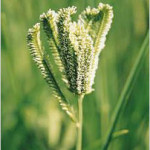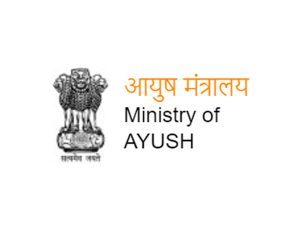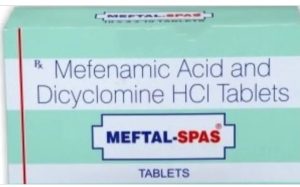‘Mandua or Ragi’ or Finger Millets (Eleusine coracana): Food of Nutritious Value
25 min read
 We all are familiar with a nutritiuos food Finger millets,which is commonly known as ‘Mandua or Ragi’ in India.This is a cereal herb which is cultivated in India from 4000 years.The speciality of these tiny deep red pearls is the abundance of nutrients present in them. In the hills of India they are part of regular diet regime no wonder people living in these hills are so fit and rarely fall ill. In this article let us discuss about some of the benefits of finger millet’s and why they should be included in our diet.
We all are familiar with a nutritiuos food Finger millets,which is commonly known as ‘Mandua or Ragi’ in India.This is a cereal herb which is cultivated in India from 4000 years.The speciality of these tiny deep red pearls is the abundance of nutrients present in them. In the hills of India they are part of regular diet regime no wonder people living in these hills are so fit and rarely fall ill. In this article let us discuss about some of the benefits of finger millet’s and why they should be included in our diet.
Nutritionally, when ragi is used as a whole grain, it is higher in protein and minerals in comparison to all other cereals and millets. It is a remarkable source of protein, making it perfect for vegetarian diets.
Finger millet contains important amino acids viz., isoleucine, leucine, methionine and phenyl alanine which are not present in other starchy meals. It has the highest amount of calcium (344 mg %) and potassium (408 mg %). Ragi is a great source of iron making it beneficial for individuals with low hemoglobin levels.
Millets also contains B vitamins, especially niacin, B6 and folic acid. Some of the health benefits of ragi are attributed to its polyphenol and dietary fiber contents. Due to its high content of polyphenols and dietary fiber ragi exhibits anti-diabetic and antioxidant and antimicrobial properties; it protects against tumors and atherosclerosis (narrowing and hardening of blood vessels). Being low in fat and gluten free, ragi is easy to digest. It is therefore, given as first foods to babies in the form of ragi porridge.
Let us know the Health Benifits:-
‘Mandua or Ragi’ for weight loss: Ragi contains an amino acid, Tryptophan which reduces appetite. It has a much higher amount of dietary fiber compared to white rice and other grains. It is also a low fat cereal and most of the fats are in the unsaturated form. This makes it the best choice in grains for people trying to lose weight. The bulkiness of the fibers and the slower digestion rate makes one feel fuller on fewer calories and therefore helps prevent excess caloric consumption.
‘Mandua or Ragi’for bones: Ragi is the richest source of calcium among plant foods. Calcium along with vitamin D helps to strengthen bones. It is an excellent source of natural calcium for children and aging people. It helps in development of bones in growing children and in maintenance of bone health in adults. Thus Ragi helps to keep bone problems at bay and could reduce risk of fractures too.
‘Mandua or Ragi’ for diabetics: Regular consumption of finger millet is known to reduce the risk of diabetes mellitus and gastrointestinal tract disorders and these properties are attributed to its high polyphenol and dietary fiber content. According to research Finger Millet based diets help diabetics as they contain higher amounts of fiber over other cereals and millets. Diets based on whole finger millet have a lower glycemic response i.e. lower ability to increase blood sugar level. This has been attributed to presence of certain factors in ragi flour which lower digestibility and absorption of starch.
‘Mandua or Ragi’ for lowering high cholesterol levels: Ragi contains amino acids Lecithin and Methionine which help in bringing down cholesterol levels by eliminating excess fat from Liver. Finger Millet also contains the amino acid threonine which hinders fat formation in the liver, and helps to bring down the cholesterol levels. The high fiber content of ragi also helps to manage cholesterol problems.
‘Mandua or Ragi’ in anemia: Ragi is an excellent plant source of natural Iron. Its consumption helps in Anemia. Vitamin C increases iron absorption. Sprouted ragi develops vitamin C in the process of sprouting, therefore the iron in ragi becomes more bioavailable when consumed as sprouted ragi flour or ragi malt.
‘Mandua or Ragi’ for relaxation: One amazing benefit of Ragi is that it helps in relaxing the body naturally. It is found to be beneficial in conditions of anxiety, depression, migraine and insomnia.
‘Mandua or Ragi’ as a source of essential amino acids: Ragi is rich in Amino Acids vital for the body. Finger Millet contains amino acids namely Tryptophan, Threonine, Valine, Isoleucine and Methionoine. Isoleucine helps in muscle repair, blood formation, bone formation and improves skin health. Valine is an essential amino acid which facilitates metabolism and repair of body tissues. Another essential amino acid, not found in most cereals, is Methionine. It is found in Ragi and therefore makes it a complete protein food unlike other cereals and millets. The amino acid Methionine is useful in various body processes, helps in eliminating fat from the body, and is main provider of sulfur in body. Sulfur is essential for production of Glutathione which is the body’s natural and most important antioxidant.
‘Mandua or Ragi’ Food Preparations
Finger millet is normally consumed in the form of flour-based foods such as roti (unleavened pancake), mudde(stiff porridge/dumpling) and ambli (thin porridge). Ragi can be used to make porridge, upma, cakes, and biscuits. Ragi flour is used to make various Indian preparations like dosas, idlis and ladoos.
‘Puttu’ is a traditional breakfast of Kerala, usually made with rice powder together with coconut and steamed in a cylindrical steamer. The same preparation is also made with ragi powder, which makes it more nutritious
Multigrain flour preparation by combining wheat and finger millet in the ratio of 7:3 (wheat: finger millet) is one of the simplest ways of incorporating ragi in the daily diet as no Indian meal is complete without the Indian style bread or roti. In the proposed blend, though the gluten content is reduced significantly, the making of chapatti is not much affected. However, the color turns a little dark. Fortification of finger millet in chapattis is very helpful in controlling glucose levels in diabetic patients efficiently.
Malted ragi grains are ground and consumed, mixed with milk, boiled water or yogurt. In southern parts of India, it is a recommended food, by doctors, for infants of six months and above because of its high nutritional content. Homemade ragi malt is one of the most popular infant foods till date.
Malting characteristics of finger millet are superior to other millets. On malting the vitamin-C is elaborated, phosphorus availability is increased, digestion is easier and amino acids are synthesized. In south India, the malted ragi flour is extensively used in preparation of weaning foods, instant mixes and beverages.
Despite finger millet’s rich nutrient profile, low cost and easy availability recent studies indicate its lower consumption in general by urban Indians. Obesity has become a matter of health concern in India. Unhealthy foods have increasingly become a part of the food choices made by youth. Large populations of children in the country are malnourished and are deficient in calcium and protein. The millet ragi then could be the answer to all the above problems relating to nutrient deficiencies. ‘Mandua or Ragi’ is truly a wonder cereal grain and should be consciously incorporated in the diets in one way or the other.






